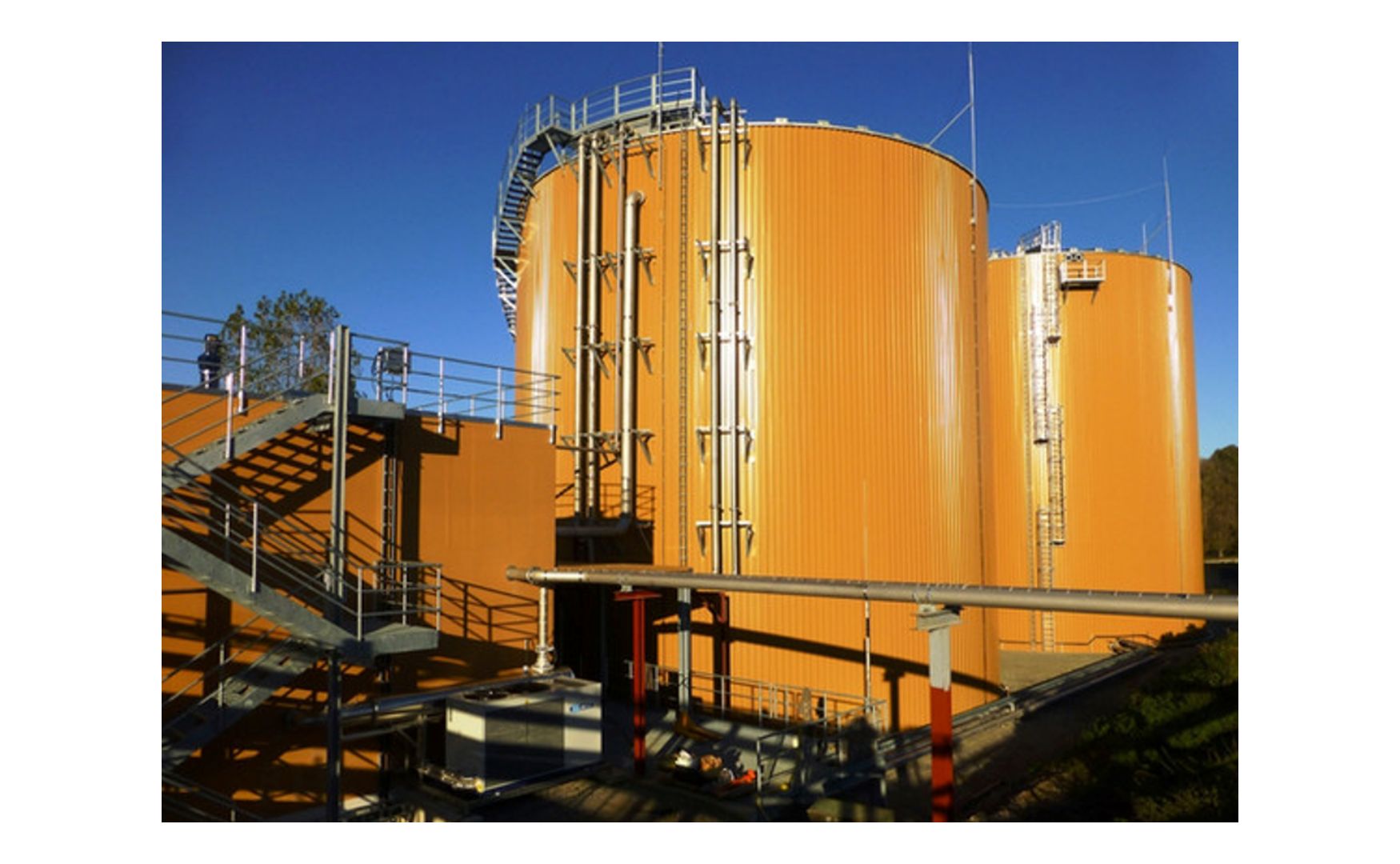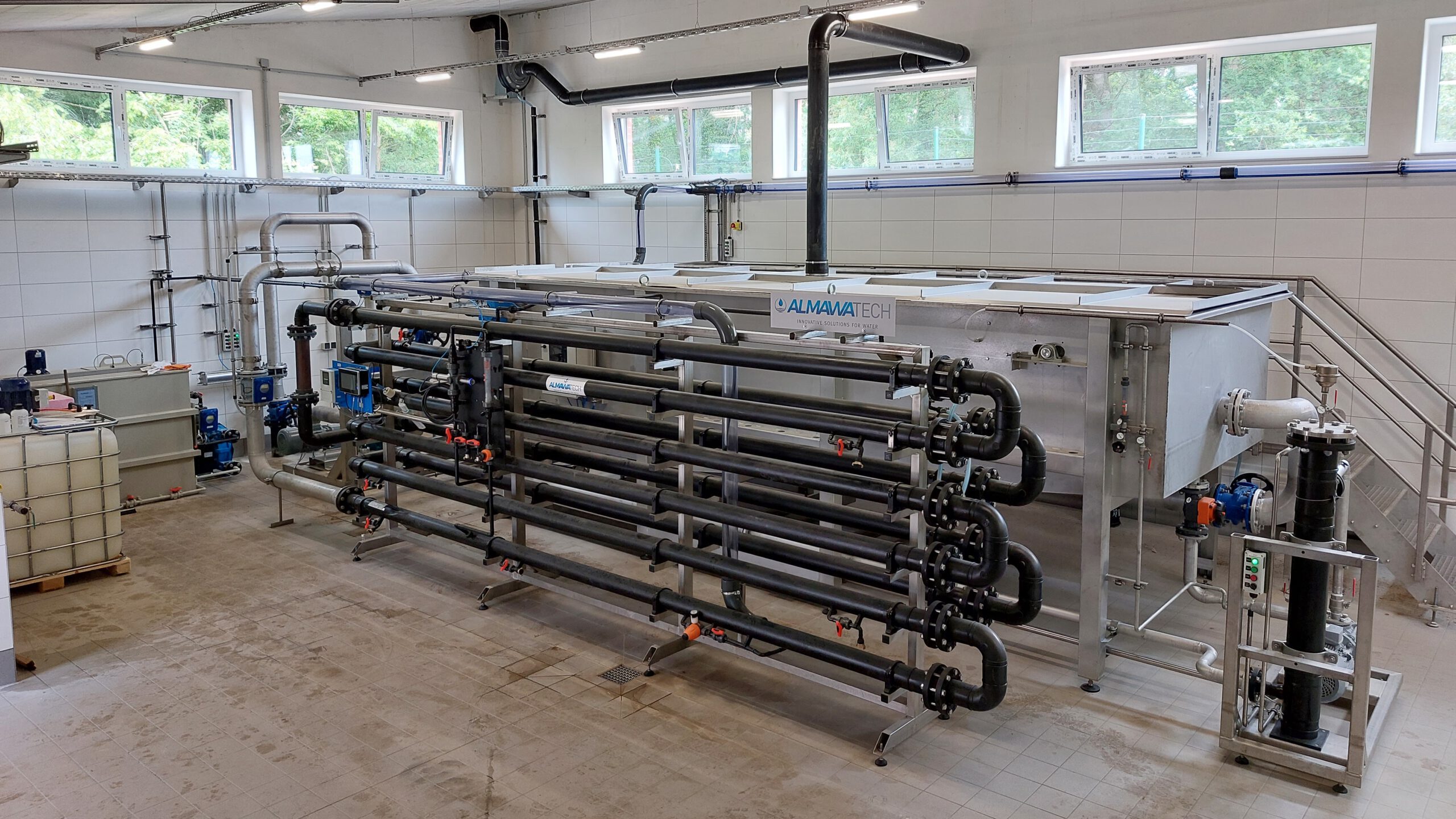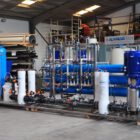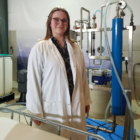COD (Chemical Oxygen Demand)
The COD (chemical oxygen demand) is a key parameter in water and wastewater treatment that indicates the amount of oxygen required to chemically oxidize all organic and inorganic compounds present in the water. The COD serves as an indicator for organic pollution in industrial wastewater and enables an assessment of the overall pollution of the wastewater by oxidizable substances. In practice, the COD is used to evaluate the effectiveness of wastewater treatment processes and to ensure that the legal requirements for discharge into water bodies or wastewater treatment plants are met.
Table of contents
Technical background
The COD measures the amount of oxygen required for the complete oxidation of all organic compounds in a water sample. In contrast to BOD (biochemical oxygen demand), which only measures the biodegradable part of the organic compounds, the COD also includes poorly degradable or non-degradable compounds. The COD is given in mg O₂/l (milligrams of oxygen per liter).
The COD is measured by chemical oxidation with a strong oxidizing agent such as potassium dichromate (K₂Cr₂O₇) under acidic conditions. During this process, the organic compounds oxidize and the amount of oxygen consumed corresponds to the COD value. This value is often higher than the BOD, as non-biodegradable compounds are also recorded.
Importance of COD in industrial wastewater treatment
In industrial wastewater, the COD can vary greatly depending on the type of industrial processes and the amount of organic compounds. Industries such as the food and beverage industry, the chemical industry and paper manufacturing produce wastewater with high COD values, as this wastewater often has a high concentration of organic substances. The COD serves as a critical parameter to quantify the contamination of the water and to design the treatment process accordingly.
Monitoring and reducing COD is crucial to ensure that the treated wastewater meets the legal requirements for discharge into water bodies. A high COD value means that the wastewater is heavily contaminated with organic or oxidizable substances that can pollute the aquatic ecosystem by reducing the oxygen content in water bodies.
COD and BSB - A comparison
The BOD (biochemical oxygen demand) measures the oxygen demand for the biological oxidation of easily degradable organic compounds over a certain period of time (usually 5 days, BOD5). The COD, on the other hand, measures the total oxygen requirement to chemically oxidize all organic compounds, including the poorly degradable or non-biodegradable substances.
The ratio of COD to BOD (COD/BOD ratio) is an important indicator of the biodegradability of wastewater:
- A low COD/BOD ratio (close to 1 or 2) shows that the organic compounds in the wastewater are predominantly biodegradable, which enables efficient treatment by biological processes.
- A high COD/BOD ratio (greater than 3) indicates that the wastewater contains poorly degradable or non-degradable compounds, which may require additional or alternative treatment processes.
Process for COD reduction
The COD value in industrial wastewater is reduced using various processes, depending on the type and quantity of organic pollution:
1. biological aerobic processes
- Biological wastewater treatment plants, such as the ALMA BHU Bio, are based on the activated sludge process, in which microorganisms break down the organic compounds and thus reduce the COD. These processes are particularly effective in removing biodegradable organic substances.
2. biological anaerobic processes (biogas from wastewater)
- The use of anaerobic reactors, such as the ALMA BHU GMR, can offer an efficient solution for wastewater with a high COD value. In these reactors, organic compounds are broken down by microorganisms in the absence of oxygen, producing biogas (mainly methane) as a usable energy source. This technology is particularly suitable for highly organically contaminated wastewater from the food industry, dairies or the sugar industry and reduces both COD and operating costs.

Photo: ALMA BHU GMR biogas plant (anaerobic plant) for the production of biogas from highly contaminated wastewater
2. chemical-physical processes
- Chemical-physical processes such as precipitation, flocculation and oxidation are used for organic compounds that are difficult to break down, as is often the case in the chemical industry or metal processing. CP plants (chemical-physical plants), such as the ALMA CHEM MCWuse precipitants and flocculants to remove poorly degradable compounds and reduce COD.

Photo: CP system ALMA Chem MCW with gravel filtration
3. flotation plants
- In flotation, suspended solids and organic substances are removed from the wastewater by adding air and flocculants. Our ALMA NeoDAF flotation systems reduce COD particularly effectively in wastewater containing high concentrations of lipophilic substances and suspended solids.

Photo: Our ALMA NeoDAF flotation system with automatic dosing stations
Conclusion
The COD is an important indicator for determining the organic load of wastewater and enables a comprehensive assessment of wastewater quality. Reducing the COD is crucial in order to comply with legal limits and minimize environmental pollution. With ALMAWATECH 's customized solutions, COD values can be reliably reduced, resulting in efficient and sustainable wastewater treatment.








